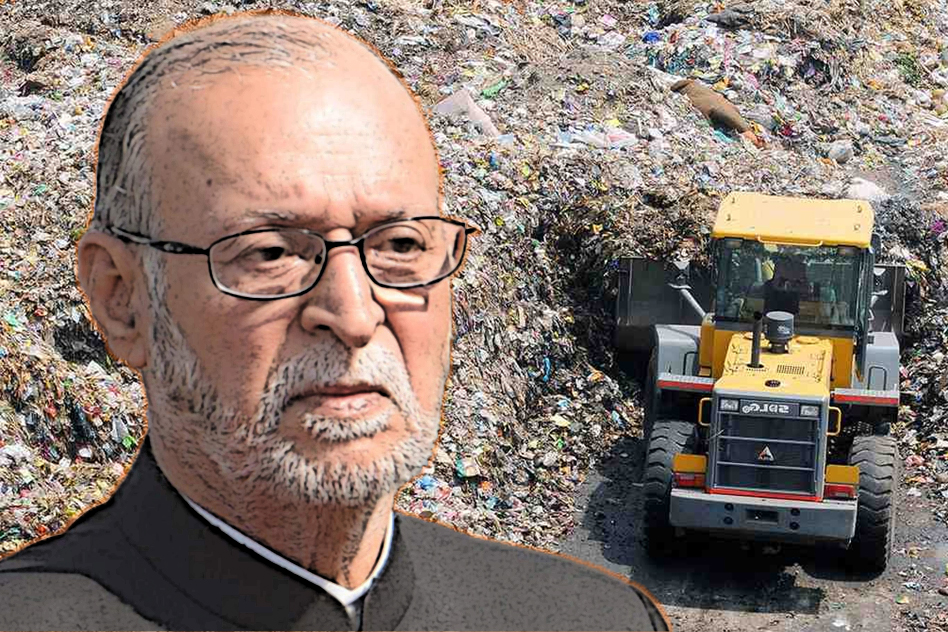
"Dump Garbage Near L-G's House," Says Supreme Court On Mountains Of Garbage In Delhi
7 Aug 2018 7:57 AM GMT
“Ganga Ram Hospital has done a study which says that 50 per cent of population of Delhi has a chance of having lung cancer even if they do not smoke. The Niti Aayog says that in 2019, there will be shortage of water in Delhi. Will there be any person alive in Delhi in such a situation? 1,800 tonnes a day is huge. What will happen from now till December 2019,” a fuming Apex Court said.
Mountains of garbage in Delhi has irked the Supreme Court to the extent where they said that it was an ‘emergency situation’ and they expressed dissatisfaction over the way waste management authorities are handling the situation.
The bench comprising Justices Madan B Lokur and Deepak Gupta sought details from the authorities about the household waste segregation project launched in some parts of Delhi like Defence Colony, Green Park and Maharani Bagh. They asked the authorities for the update on the issue.
“Will there be any person alive in Delhi in such a situation?” an irked top court said and sought details of how plans on management of solid waste could be implemented, especially on segregation of household waste, reported NDTV.
Landfill in residential area
Additional Solicitor General (ASG) Pinky Anand’s submission that residents of Sonia Vihar are objecting to a new landfill being made there, had the court fuming. The Court said that people had every right to question the decision.
“Lives of people are going to be affected if you will put garbage in front of their house. They have a right to say that do not put garbage in front of my house. It is a criminal offence. People will object to it. You will have to find a solution. You cannot just shift the garbage like this,” the bench observed.
They further said that the authorities should dump “waste on the Raj Niwas Marg”, where Delhi Lieutenant Governor’s official residence is located.
The top court further said that waste segregation is the need of the hour and stressed on the need to raise awareness about the issue. “It is an emergency situation, and unfortunately, your reactions are not indicating any solution,” the bench told the ASG, reports NDTV.
The bench took exception that area falling under the South Delhi Municipal Corporation (SDMC) generates 3,600 tonnes of waste every day out of which 1,800 tonnes was thrown at the landfill site. The ASG took cognisance of the issue and said that all the waste generated would be sent to waste-to-energy and processing plants by December 2019.
The ASG further said that the SDMC was facing issue regarding the landfill at Sonia Vihar to which the SC said, “Are you suggesting people cannot raise this issue like what was done in 1975 that if you ask something, you will be put in jail?”
When ASG said that they were not suggesting anything like that, SC said, “Then put it (garbage) on the Raj Niwas Marg. Do not treat people like this. In Sonia Vihar, perhaps the underprivileged people live.”
What SC told the L-G few days earlier?
“You (the Lieutenant Governor) say ‘I have power, I am a Superman’. But you don’t do anything. You say the corporations are answerable to you. Tell us how much time will you clear the sites. Why should the corporations be asked? You are the L-G. You should have found out by now,” the Apex Court had said highlighting the issue of waste management.
“There are mountains of garbage in Delhi, particularly in Bhalswa, Okhla and Ghazipur. We would like to know who is responsible for clearing the garbage — those answerable to the L-G or those answerable to the Chief Minister?”, the Bench of Justices M.B. Lokur and Deepak Gupta said.
The court had earlier observed that the Ghazipur landfill in Delhi was close to matching the height of 73-metre high Qutub Minar and will need red beacons to warn aircraft in the area.
The court demanded accountability when an affidavit submitted by the L-G’s representative asserted that the civic bodies in Delhi were answerable to him. However, ASG Pinky Anand refused to commit on a possible timeline to clean the garbage.
What could be done?
The bench has asked authorities to look into different kinds of waste segregation. They asked the authorities to divide the waste into four parts namely wet, dry, hazardous and construction and building waste.
It sought details on how the penalty should be imposed on people who do not segregate waste. The bench also observed that the primary responsibility of waste management should be of the citizens at a household level.
 All section
All section













